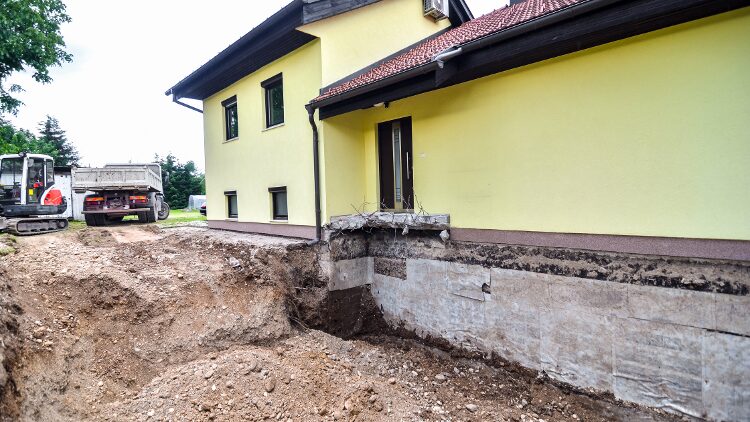The Components of a Foundation
Differenttypes of foundations include different components. To begin with, a pier and beam foundation, which is the most prevalent type of foundation in the Houston-Galveston area, contains four main components:
- a concrete slab, which is typically reinforced with rebar (reinforcing bar) or WWF (welded wire fabric, also known as welded wire mesh);
- a series of beams, which support the slab and flooring above;
- a number of concrete piers, which are driven to a “point of refusal” in order to bear the weight of the home and ensure its long-term stability;
- piles or posts, which connect the horizontal beams to the piers below.
Coming down to the slab-on-grade foundation, which is another type of foundation commonly used in Houston and surrounding areas, it consists of:
- a series of thickened footings that are placed toward the exterior sides of the home and below all load-bearing walls, across the entire footprint area;
- a layer of gravel or crushed stone, which is usually laid down in addition to the footings in order to provide a solid base for the floor system above;
- a concrete slab, which is poured on top of the footings; depending on the loads as well as the tensile, compressive, bending, and/or shear forces the slab must withstand, steel reinforcement may also be specified.
Irrespective of the type of foundation you have, it delivers a series of benefits that also explain the reasons why this element is the most important part of your home.
It Holds Your Home Up
The main role of a foundation is to support and keep the entire structure level regardless of any movement that might happen around and below it. Ground movement can result from:
- variations in the moisture content of theclay soil, which is usually caused by poor drainage during heavy rains and flooding followed by loss of soil moisture during droughts;
- sudden changes in the water table;
- plumbing or sewer line damage;
- trees growing too close to the home;
- sinkholes and earthquakes.
If you’re about to build your own home or buy a house with foundation issues, the builder or foundation repair contractor should consider a series of aspects in order to ensure the structural integrity of the foundation and home. These range from the depth to the water table and type of soil/backfill material used underneath the home to the most appropriate type of gravel/crushed rock and compaction/soil stabilization methods recommended.
It Can Prevent Differential Settlement
Differential settlement usually occurs when the soil around and under the foundation is exposed to repeated expansion-contraction cycles. While differential settlement can affect any type of home and foundation, a foundation can be specifically built to prevent this type of settlement and its consequences. Even though heavy rainfall, flooding, drought, freezing temperatures, soil subsidence, sinkholes, and earthquakes could cause the ground under a home to move, a foundation that’s built to act as a stabilizer can prevent the lateral movement of the structure. Furthermore, an effective drainage system installed along the foundation can better ensure the structural stability and integrity of the home in the long term.
It Elevates Your Home above the BFE
When floodwaters collect around a home that hasn’t been elevated and equipped witha proper drainage system, they can cause the soil to expand and shift. This can put a lot of pressure on the foundation and lead to extensive damage. Conversely, lifting your homeabove the BFE and complementing it with adequate landscape drainage will help you prevent water damage no matter the weather conditions.
It Insulates Your Home
A slab-on-grade foundation or a pier and beam foundation that’s been properly insulated can save you a ton of money on energy bills. If your foundation and/or crawlspace doesn’t have insulation installed already,different types of insulation can be added to the exterior and/or interior to reduce energy loss. Additionally, the concrete slab that’s now standard for all foundations will keep pests out of your home, protecting it from any insects that could cause serious damage.
Unfortunately, many people neglect and forget to inspect their foundations on a regular basis. This may lead to costly repairs down the road. But if you hire a foundation repair expert to inspect your home and identify the early signs of foundation problems, you can easily prevent foundation damage and all the costs involved. To make sure that your foundation is still structurally sound and safe,contact us today for a free foundation inspection!

